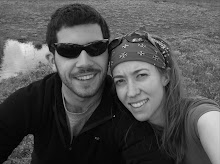 Well, we are now back in Somoto after two very short weeks at home. The time was well spent with family and friends and despite driving all over
Well, we are now back in Somoto after two very short weeks at home. The time was well spent with family and friends and despite driving all over
Thursday was back to work and back to afternoon thunderstorms. Astro also got back into his routine of sleeping in the mornings and visiting communities in the afternoon. We made it to two youth groups before the week ended. Jess went back to SILAIS to find that the director of the Madríz health department was being replaced. So, while her specific office isn’t affected, most programming has been put on hold as the new director gets acclimated to the job. She’s hoping to start back up next week with some of the workshops she was doing before we skipped town.
In the many plains, cars, and buses it took to get home Jess and I tried to brainstorm some blog topics that you all might find interesting. We’d love to hear some more questions that we can possibly develop into full blog posts, so please leave your comments! The feedback from our Soy and
Today, however, we’d like to introduce you all to the Municipal Market here in Somoto. This building we put up about 3 years ago to replace a tangled mess of stalls on the other side of town. Since the market serves close to 50,000 (the entire
Basically, the market is like a big airport hangar with a few partitions that go up about
The produce section is by far the biggest piece of the market. On the weekend there are probably 20 different vendors in this area. Everything comes from (relatively) nearby and prices are just about the same no matter who you go to. The quality can change quite a bit though, so Jess and I always walk through the whole area to find who has the best produce that day. We also try and buy from as many vendors as we can to spread the money around. While a lot of the produce is the same as you would find in the supermarket in the States, the biggest difference is in the seasonal changes. A lot of staple fruits and veggies are only around for a month or so each year. Some produce can be found in every stall one weekend, and then it´s not seen again for a whole year. Jess and I have to get creative about our menu when it comes to these seasonal items. We could go into detail about what kinds of fruits and veggies change through the seasons, but we could write a whole post just on the varieties that can´t be found in the States. Maybe we will!
The meat section is…well, different to what we’re used to in the States. It is very smelly, full of flies, and there really aren’t any measure taken to make sure the meat stays clean. The Health Department (my co-workers) try to get by every day to check the meat for worms, parasites, and other niceties, but they usually only get there once a week. So, Jess and I don’t buy meat there. If you were interested in buying meat in the market, you’d be able to find any cut of beef or pork you’d like, including testicles, hooves and intestine tracks!
In the dry goods area they sell by the pound coffee, corn, sorghum, corn flour, wheat flour, red beans, white beans, black beans, cocoa, dog food, cat food, sugar, salt, cinnamon, and anything else that can be dried and sold in bulk. Jess and I will get dog food here every once in a while for about 50 cents a pound. Jess will also come here if she wants to do some culinary experiments. Some of her most recent purchases include soy beans (see last post) and “dulce,” the unrefined product that comes from sugar cane. This is also one of the few places we can find baking powder and soda, which we go through pretty quickly in our cooking and smelly shoes.
In the clothing area one can find a bootleg version of any movie, and a knock-off version of any clothing or shoe brand. We’ve got it all: Abercrombie, Lacoste, Ralph Lauren, and Hollister, but I tend to stick with brands more my style, such as Tom Cruise dress shirts and Nickel shoes.
The eatery area is home to 4 or 5 Doñas that prepare breakfast and lunch for the low low cost of a $1.50. These are good meals too, with each breakfast featuring one fried egg, a mountain of rice and beans, cheese, cream, two tortillas, half an avocado, and one cup of very strong coffee. The only disadvantage is that the eatery area is right next to the meat stalls, so the smells and flies tend to float your way. Jess and I will still eat there about once a month, and both of our parents have enjoyed a meal from the Doñas during their visits to Somoto.
So, that is the Somoto Municipal Market. We hope you enjoyed your tour. Now that we’re back in action things are starting to pick up again. Please stay tuned for blogs about the visit from the Irish, Hurricane Season 2009, and some of those crazy fruits mentioned above. Thanks again for reading!






